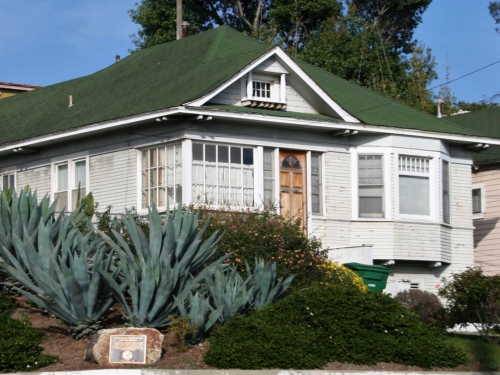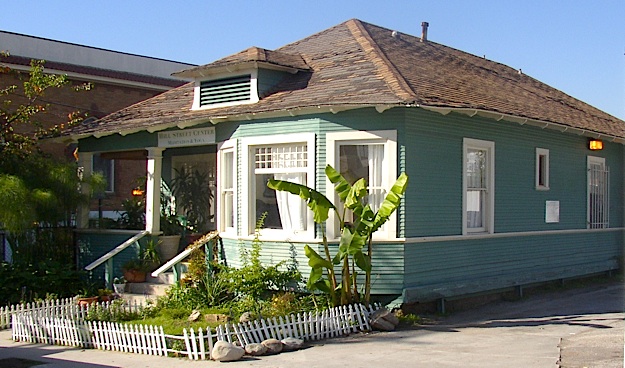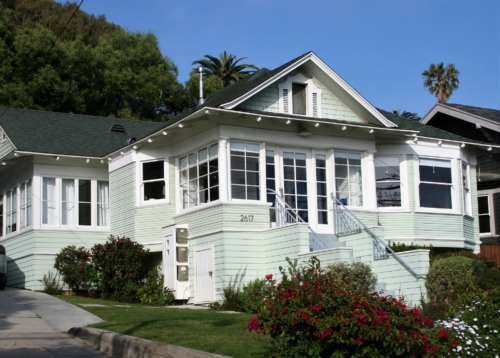Third Street Neighborhood Historic District

- Known As
- Bungalow
- Architect
- –
- Built
- 1875
- Designated
- July 1, 2019
The Third Street Neighborhood Historic District is the City’s first Historic District and was designated on July 1, 1990. It consists of 38 contributing buildings constructed between 1875 and 1930, offering a visual chronicle of the beginnings of the Ocean Park community and the people and activities that characterized the area.
The historic district is located between Ocean Park Boulevard and Hill Street, and includes Second, Third and Beach Streets. The neighborhood contains 27 original bungalows built between 1903 and 1915, as well as four structures from the late 1800s, including landmarks like the 1893 Hostetter House as well as 2621 Second Street, which began its life as the City’s first church in 1875 and is now a private residence.
Originally farmland, the area was converted to housing tracts by W.D. Vawter, a Midwestern adventurer who migrated to Santa Monica in 1875. He bought three lots on Fourth Street, built two houses and opened a general store. Vawter then helped organize the First National Bank of Santa Monica, and key to the growth of the area, he established a horse-drawn streetcar that ran between north and south Santa Monica.
Vawter’s enterprise attracted other entrepreneurs, including Abbot Kinney, who renamed South Santa Monica “Ocean Park” and promoted the area as the “Coney Island of the Pacific.” Beach cottages were upgraded, and pleasure piers, boardwalks and other entertainments were built.
On the strength of the local amusement industry, Ocean Park continued its rapid growth into the 1900s, including modern conveniences for the Third Street District like paved streets, electric lighting and running water. The period also saw the construction of 27 of the neighborhood’s original bungalows, which still stand today.
Down the hill on Main Street, commercial development flourished with businesses like the Imperial Ice Company—home of “pure ice, distilled water, ice cream and bottled soda”—attracting an expanding middle class that included business owners, professionals, tradespeople and factory workers.
Many of the new residents were from other states or countries. For these newcomers, the bungalow was “California.” “The bungalow was practical,” wrote Robert Winter in The California Bungalow. “The feeling of independence it gave, even on a tiny plot of land, is part of the freedom which even today one senses in Southern California.”
During the 1910s, Ocean Park’s amusements reached their peak and development with large auditoriums and dance halls. Ocean Park even received its own Carnegie library in 1918, now a designated landmark, one block from the Third Street neighborhood.
Later, the mid-1920s and early 1930s marked a new building type in the area—the Spanish Colonial Revival bungalow court, combining single units into a multi-family building surrounding a landscaped courtyard. Soon after, local development slowed as the area’s three-decade boom succumbed to the Great Depression.
Designating this district was a grass-roots effort, organized by local residents in order to protect these streets from proposed modern condominium development. Local residents took on the responsibility for the necessary planning studies and neighborhood organizing for the district nomination. Not only were they successful, but the work involved in creating the district created strong bonds among the affected homeowners and built a community. And as Santa Monica’s original historic district, the Third Street neighborhood paved the way for other areas of the city to preserve their irreplaceable historical resources.
Sources:
- Santa Monica Planning and Community Development, District Application for Third Street Neighborhood in Ocean Park.

